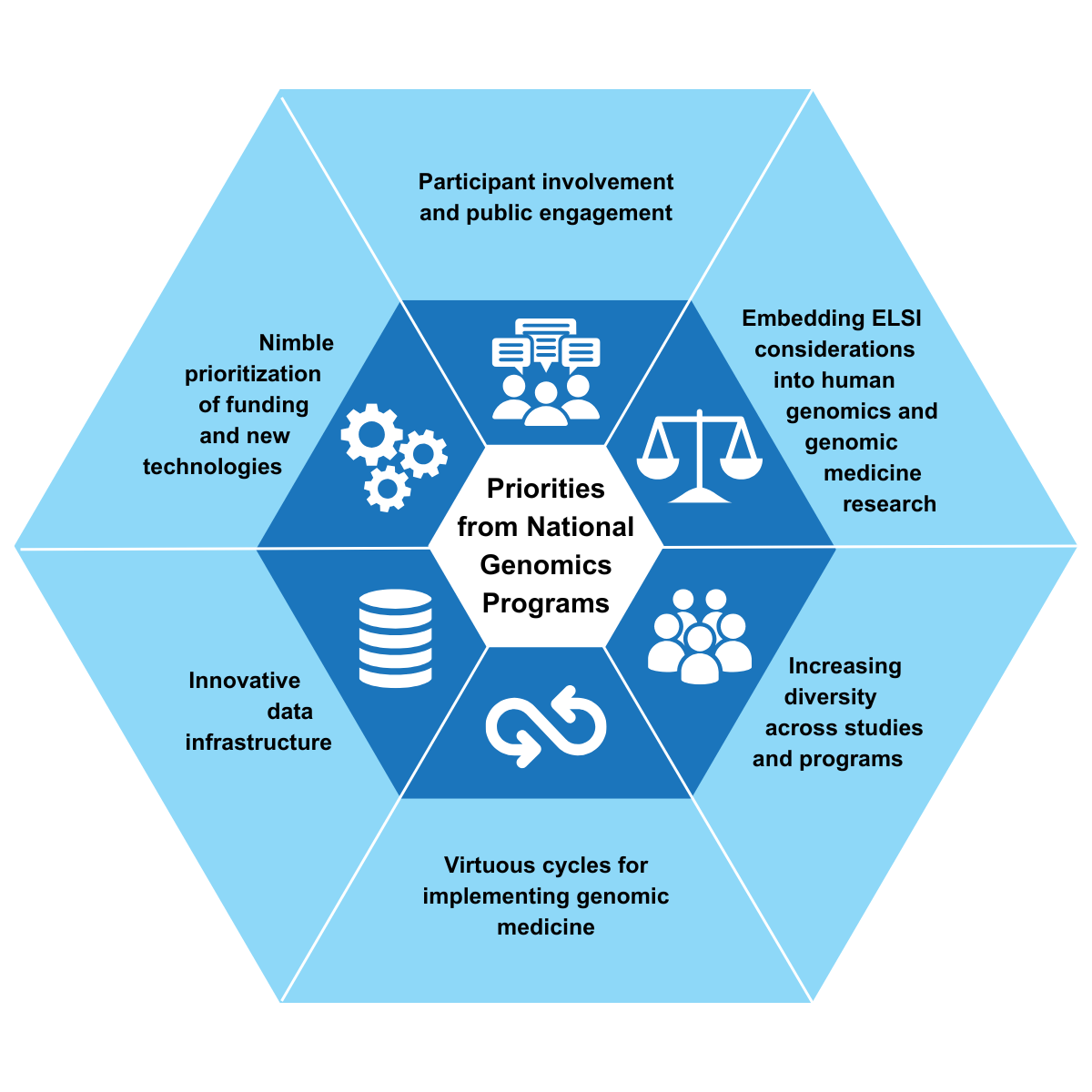
An analysis of national human genomics programs across seven countries has identified common priorities and barriers to implementing genomic medicine globally.
The programs span Genomics England; Genome Canada; the National Human Genome Research Institute (USA); Precision Health Research, Singapore (PRECISE); the Danish National Genome Center; the Qatar Genome Program; and Australian Genomics.
The expanding global genomics landscape: Converging priorities from national genomics programs is published in the latest edition of The American Journal of Human Genetics.
While emphasising there is no “one-size-fits-all” approach – programs are designed to address local issues and health systems – the paper identifies six priority areas shared by seven countries’ active genomic programs and gives examples of these.
The priorities span participant involvement and public engagement; ethical, legal and social considerations; increasing diversity across studies and programs; virtuous cycles for implementing genomic medicine; data infrastructure; prioritising funding and new technologies.
All national and international programs vary in their level of maturity, funding sources and strategies, but in a rapidly expanding health genomics landscape, many of these converge, the paper finds.

